
Kuldīga: The Hidden Gem of Latvia
Discover Kuldīga, Latvia's picturesque town with Europe's widest waterfall, historic charm, and a blend of natural and cultural treasures.
Kuldīga, often referred to as the 'Venice of the North', is a charming town located in the western part of Latvia. Known for its rich history and picturesque scenery, Kuldīga offers tourists a serene escape into a world of cobbled streets, historic buildings, and natural wonders. One of the most iconic spots in Kuldīga is the Venta Rapid, the widest waterfall in Europe. Spanning the Venta River, this natural marvel is a sight to behold, especially during spring when local fish known as vimba leap through the cascading waters. The old brick bridge over the Venta River, built in 1874, adds to the town’s historical charm and provides an excellent viewpoint for the waterfall. The heart of Kuldīga is its well-preserved old town, where you can stroll through narrow streets lined with wooden houses, each telling a story of centuries past. The town's architecture reflects a blend of Latvian, German, and Scandinavian influences, making it a unique and picturesque setting. Don't miss the Kuldīga Town Hall Square, where local markets and events often take place, offering a glimpse into the daily life of the residents. For those interested in culture and history, the Kuldīga District Museum is a must-visit. Housed in a beautiful 17th-century building, the museum showcases the town's history through various exhibits and artifacts. Another notable site is St. Catherine's Church, a stunning example of Baroque architecture dating back to the 17th century. The church's interior and serene atmosphere make it a peaceful retreat for visitors. Nature lovers will find plenty to explore in the surrounding areas of Kuldīga. The Riežupe Sand Caves, located just outside the town, offer an adventurous underground experience. These caves are especially popular during summer for their cool temperatures and mysterious passages. Additionally, the nearby Ēdole Castle and its scenic parklands provide a perfect day-trip destination for those looking to venture beyond the town.
Local tips in Kuldīga
- Visit the Venta Rapid in spring to witness the vimba fish leaping through the waterfall.
- Wear comfortable shoes for walking through the cobbled streets of the old town.
- Check the local event calendar for markets and festivals at the Town Hall Square.
- Bring a flashlight if you plan to explore the Riežupe Sand Caves.
- Take a day trip to Ēdole Castle for a scenic escape into the Latvian countryside.
Kuldīga: The Hidden Gem of Latvia
Kuldīga, often referred to as the 'Venice of the North', is a charming town located in the western part of Latvia. Known for its rich history and picturesque scenery, Kuldīga offers tourists a serene escape into a world of cobbled streets, historic buildings, and natural wonders. One of the most iconic spots in Kuldīga is the Venta Rapid, the widest waterfall in Europe. Spanning the Venta River, this natural marvel is a sight to behold, especially during spring when local fish known as vimba leap through the cascading waters. The old brick bridge over the Venta River, built in 1874, adds to the town’s historical charm and provides an excellent viewpoint for the waterfall. The heart of Kuldīga is its well-preserved old town, where you can stroll through narrow streets lined with wooden houses, each telling a story of centuries past. The town's architecture reflects a blend of Latvian, German, and Scandinavian influences, making it a unique and picturesque setting. Don't miss the Kuldīga Town Hall Square, where local markets and events often take place, offering a glimpse into the daily life of the residents. For those interested in culture and history, the Kuldīga District Museum is a must-visit. Housed in a beautiful 17th-century building, the museum showcases the town's history through various exhibits and artifacts. Another notable site is St. Catherine's Church, a stunning example of Baroque architecture dating back to the 17th century. The church's interior and serene atmosphere make it a peaceful retreat for visitors. Nature lovers will find plenty to explore in the surrounding areas of Kuldīga. The Riežupe Sand Caves, located just outside the town, offer an adventurous underground experience. These caves are especially popular during summer for their cool temperatures and mysterious passages. Additionally, the nearby Ēdole Castle and its scenic parklands provide a perfect day-trip destination for those looking to venture beyond the town.
When is the best time to go to Kuldīga?
Iconic landmarks you can’t miss
Venta waterfall
Discover the breathtaking Venta Waterfall in Kuldīga, a natural wonder and the widest waterfall in Europe, surrounded by lush landscapes and rich history.
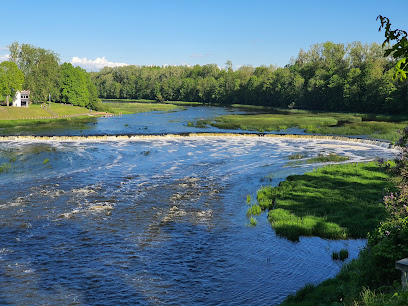
Alekšupīte waterfall
Explore the enchanting Alekšupīte Waterfall in Kuldīga, Latvia - a picturesque natural wonder perfect for relaxation and adventure.
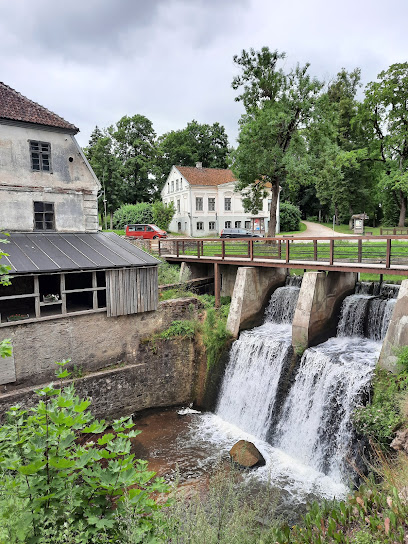
Kuldiga Castle Park
Discover the serene beauty and historical charm of Kuldiga Castle Park, a must-visit attraction in Latvia for nature lovers and explorers.

Kuldiga grand stage
Discover the vibrant cultural scene at Kuldiga Grand Stage, a must-visit cultural center in the heart of Latvia's charming town of Kuldiga.
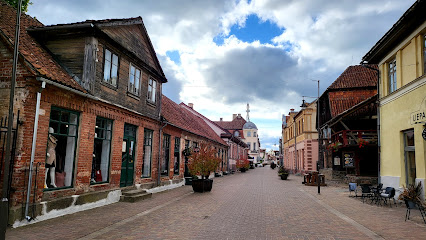
Kuldīga brick bridge over Venta
Discover the enchanting Kuldīga Brick Bridge, a historic marvel that beautifully captures the essence of Latvian architecture and natural beauty.
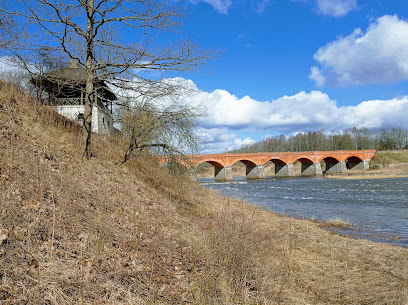
Riežupes smilšu alas
Explore the captivating Riežupes Smilšu Alas, a unique natural wonder in Latvia showcasing stunning sandstone formations and rich historical carvings.
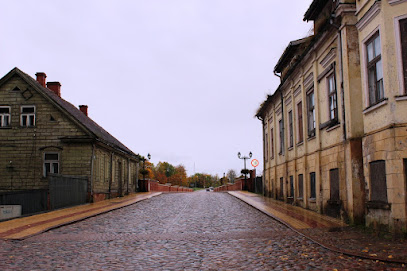
Kuldiga District Museum
Explore Kuldiga's heritage at the Kuldiga District Museum, showcasing local art and history in a captivating setting.
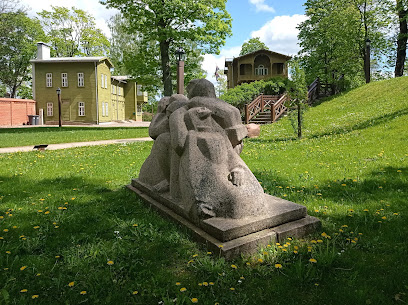
Kuldiga Old Town Hall Square
Explore the historic Kuldiga Old Town Hall Square, a cultural gem filled with charming architecture, local cafes, and vibrant history.
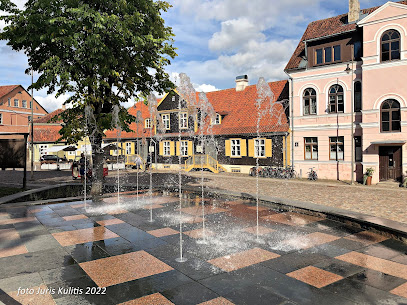
The story of ancient Kuldiga museum
Discover the rich history of Kuldiga at the Ancient Kuldiga Museum, where engaging exhibits bring the past to life.
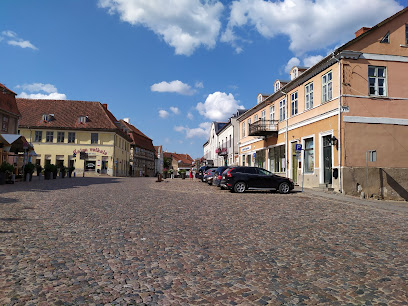
Kuldiga’s Needle Tower
Explore the captivating history and architectural beauty of Kuldiga’s Needle Tower, a unique historical museum in Latvia's charming town.
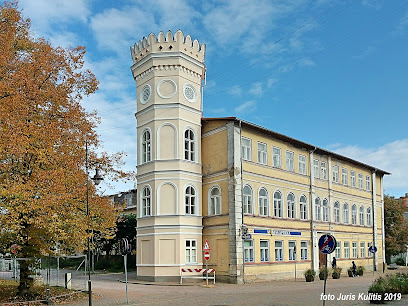
Girl with a water dish
Explore Kuldīga's 'Girl with a Water Dish': a cultural landmark embodying Latvian artistry, history, and charm.
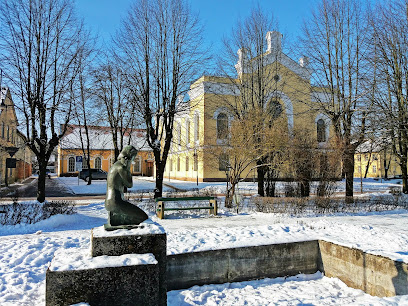
Kuldīga, Padure Parish, Vicinity of the Old School I, Jewish Victim Memorial Site, Latvia
Explore the Kuldīga Jewish Victim Memorial in Latvia, a serene historical landmark honoring the memories of Jewish victims amidst stunning natural beauty.
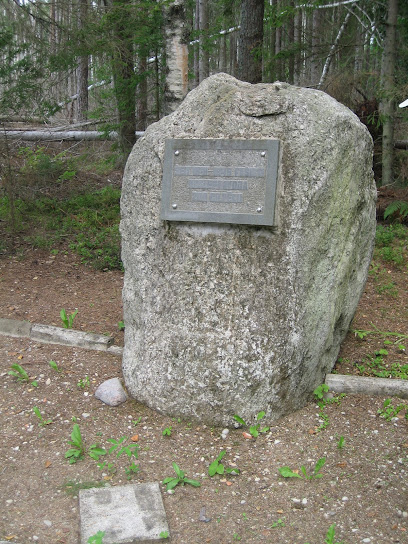
Kuldīga Municipality, Rumba Parish, Monument to Victims of Fascism
Explore the Monument to Victims of Fascism in Kuldīga Municipality, a poignant tribute to resilience and remembrance amidst beautiful landscapes.
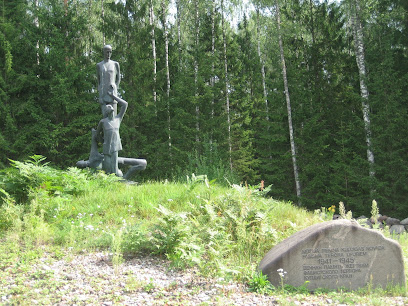
Kuldiga, Rumba Parish I, Jewish Victim Memorial Site, Latvia
Explore the Jewish Victim Memorial Site in Kuldiga, Latvia, a poignant historical landmark reflecting on the Jewish community's past and resilience.
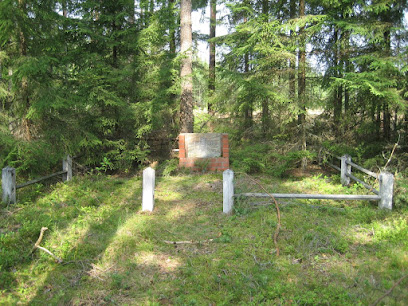
The oldest wooden house in Kurzeme
Explore the oldest wooden house in Kurzeme, a historical gem in Kuldīga showcasing Latvia's rich architectural heritage and cultural history.

Unmissable attractions to see
Alekšupīte waterfall
Explore the enchanting Alekšupīte Waterfall in Kuldīga, a stunning natural attraction perfect for relaxation, photography, and cultural discovery.
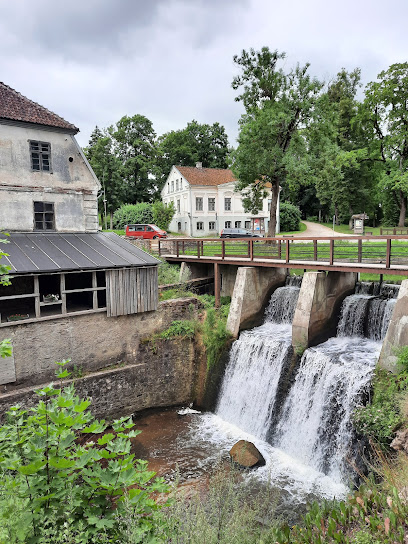
Ēdole castle
Explore the enchanting Ēdole Castle, a medieval masterpiece in Latvia, surrounded by breathtaking landscapes and rich history.
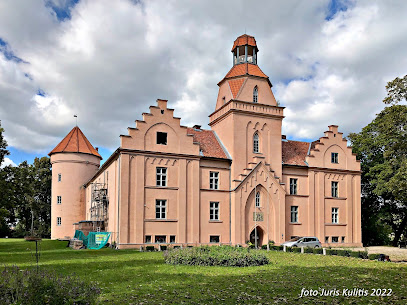
Īvande waterfall
Explore the stunning Īvande Waterfall, a hidden natural treasure in Latvia, perfect for nature lovers and adventure seekers alike.
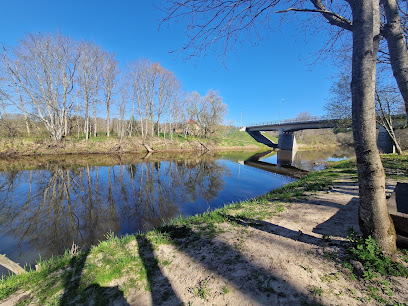
Doll garden
Discover the enchanting Doll Garden in Sabile, a whimsical attraction filled with creativity, vibrant displays, and a nostalgic journey through doll artistry.
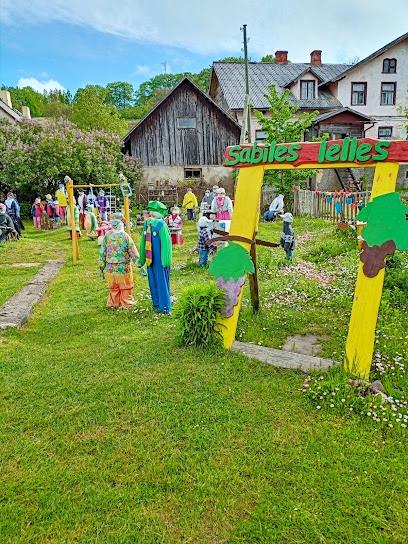
Lauku sēta - zoo ''Zemturi''
Experience the enchanting Lauku sēta - Zoo 'Zemturi', where nature meets education in the heart of Kuldīga's beautiful countryside.
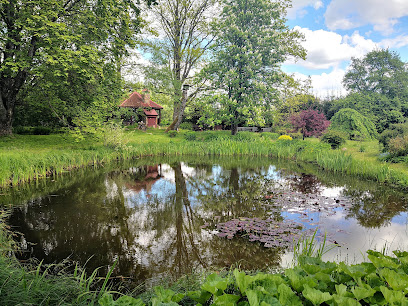
Pelču pils muiža
Explore Pelču Pils Muiža, a stunning castle in Latvia's Pelči parish, where history meets breathtaking landscapes and cultural heritage.
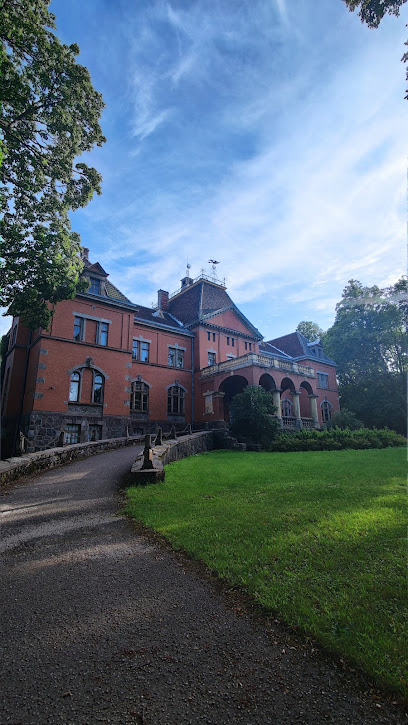
Padures muiža
Discover the enchanting Padures Muiža, a blend of history and nature nestled in Kuldīga Municipality, perfect for a peaceful getaway.
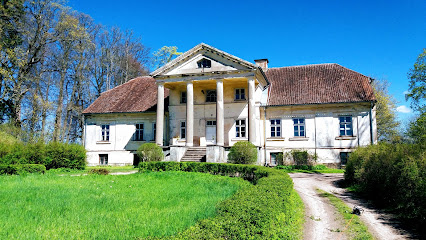
Parventa Park
Discover the tranquil beauty of Parventa Park in Kuldīga, Latvia, a perfect escape for nature lovers and families alike.
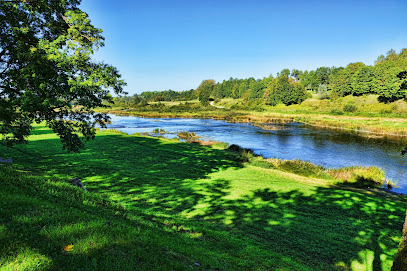
Park of 1905
Explore the serene Park of 1905 in Kuldīga, Latvia, a picturesque retreat featuring lush landscapes, cultural events, and tranquil ponds.
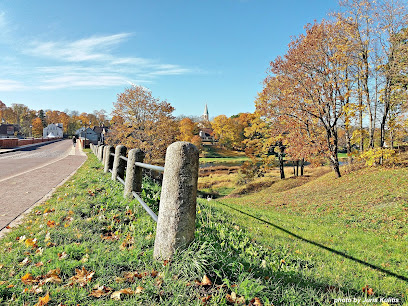
Kuldiga’s Needle Tower
Explore Kuldiga’s Needle Tower, a historical museum that unveils the rich heritage of Kuldiga through captivating exhibits and stunning architecture.
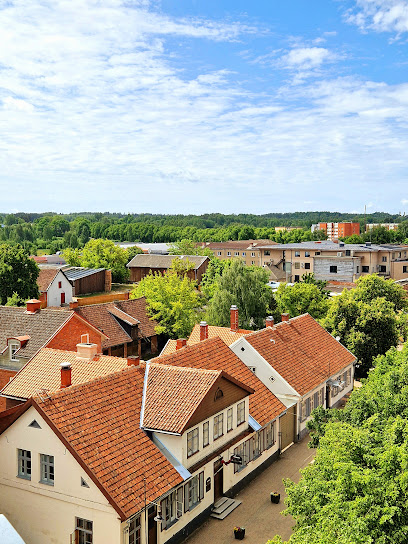
Black cape
Experience the tranquility and natural beauty of Black Cape, a top nature preserve in Kuldīga, Latvia, perfect for outdoor adventures and relaxation.
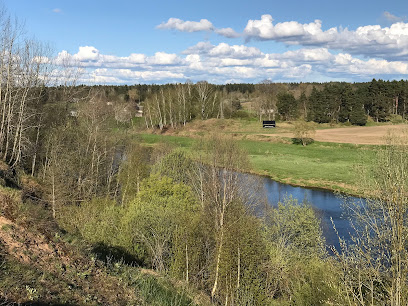
Veckuldīgas pilskalns
Explore the serene landscapes and rich history of Veckuldīgas Pilskalns, a hidden gem in Kuldīga, Latvia, perfect for nature lovers and history enthusiasts.
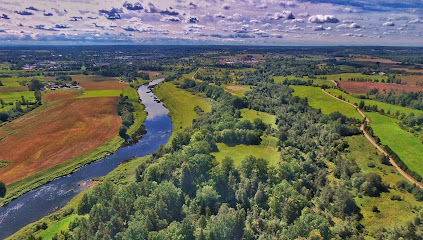
Sauleskalni
Discover the tranquil beauty of Sauleskalni Garden, a serene escape in Kuldīga Municipality, perfect for nature lovers and peaceful retreats.
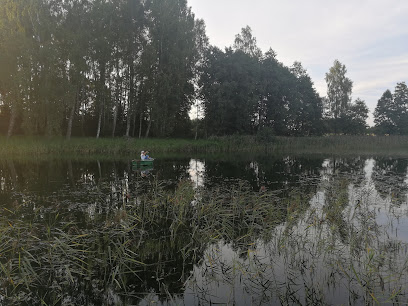
Ekskursiju Vilcieniņš Ludis
Explore the scenic beauty and rich heritage of Kuldīga with a delightful train journey at Ekskursiju Vilcieniņš Ludis.
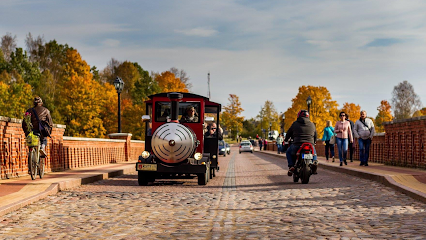
Rumbenieku kaļķu ceplis
Experience the delightful flavors and traditional craftsmanship at Rumbenieku Kačņu Ceplis, a hidden gem in the heart of Latvia.
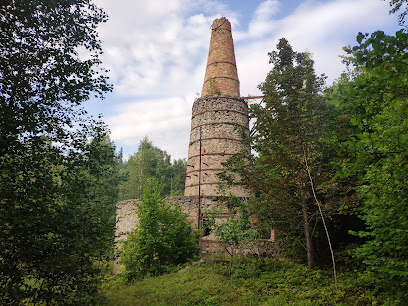
Essential places to dine
Pagrabiņš
Experience authentic Latvian cuisine at Pagrabiņš in Kuldīga – where every meal is a taste of tradition.

Goldingen Room
Discover Goldingen Room in Kuldīga for an unforgettable dining experience featuring modern twists on traditional Latvian cuisine.
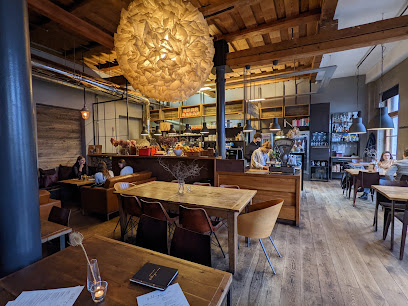
Kursas Zeme
Discover Kursas Zeme: Where Culinary Delights Meet Artistic Inspiration in Kuldīga's Heart.
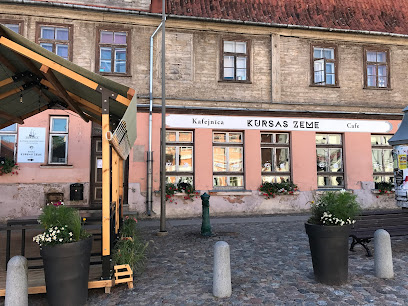
Jēkaba sēta
Discover authentic Latvian flavors at Jēkaba sēta in Kuldīga - where tradition meets comfort in every dish.

Stender's
Discover the flavors of Latvia at Stender's in Kuldīga, where traditional cuisine meets modern elegance in a charming setting.

Hesburger
Experience delightful fast food at Hesburger in Kuldīga - where tasty meals meet friendly service in a charming atmosphere.
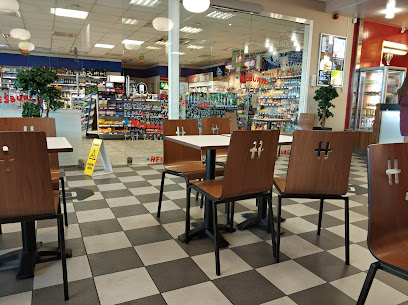
Bangert's Restaurant
Discover the culinary excellence at Bangert's Restaurant in Kuldīga – where tradition meets modernity in every dish.
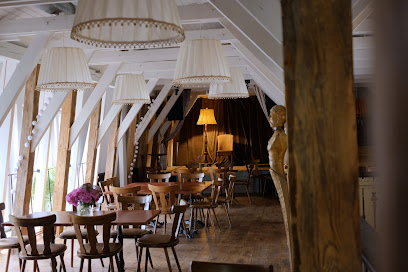
Riverside
Discover Riverside Café in Kuldīga - where aromatic coffee meets breathtaking riverside views.
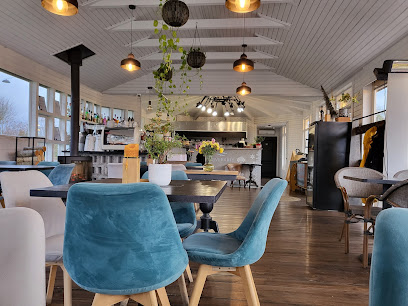
Klūdziņa
Experience authentic Latvian flavors at Klūdziņa in Kuldīga – where tradition meets modern culinary excellence.
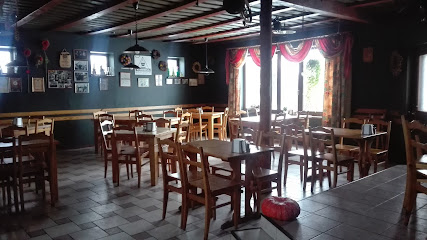
Kuldigas rumba , SIA
Experience authentic Latvian flavors at Kuldigas Rumba, where hearty soups and warm hospitality await you in picturesque Kuldīga.
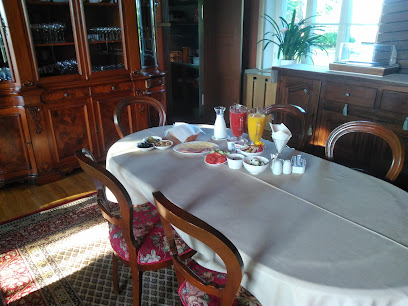
DUNA Brewery, shop & taproom
Experience Kuldīga's vibrant craft beer scene at DUNA Brewery – where tradition meets innovation in every sip.
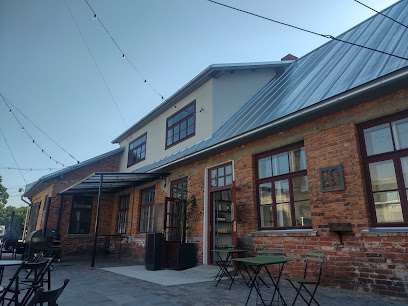
Bistro Bukstiņš
Discover Bistro Bukstiņš in Kuldīga – where local flavors meet cozy ambiance at budget-friendly prices.
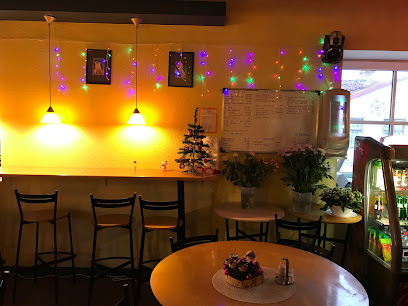
Cafe CIRCUS PIZZA Kuldiga
Discover unique thin-crust pizzas at Cafe CIRCUS PIZZA in Kuldiga - a delightful culinary stop in Latvia's charming town.
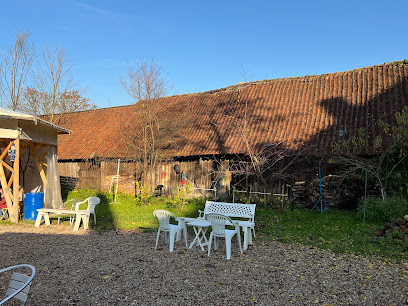
Hercogs, Sushi bar
Experience the best sushi in Kuldīga at Hercogs Sushi Bar – where authentic flavors meet local charm.
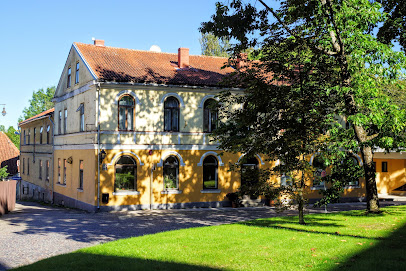
KOPA taste
Discover authentic Latvian cuisine at KOPA Taste in Kuldīga - where every dish tells a story.
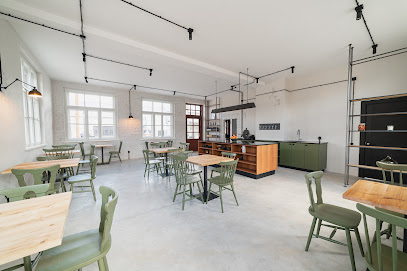
Markets, malls and hidden boutiques
Rimi Super
Discover local flavors and essentials at Rimi Super in Kuldīga, your go-to supermarket for a delightful shopping experience.

Maxima X
Explore Kuldīga's Maxima X for a taste of local flavors, fresh produce, and essential grocery shopping, all in one convenient location.

Drogas
Discover Drogas in Kuldīga, Latvia, your ultimate destination for beauty supplies, cosmetics, and unique home goods.
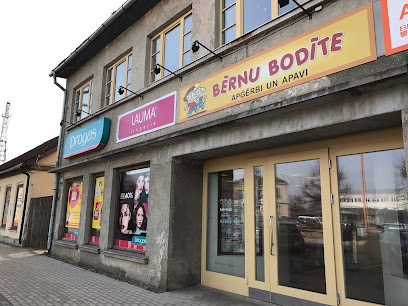
Citro
Discover Citro in Kuldīga, your go-to grocery store for local flavors and international products, perfect for all your culinary adventures.
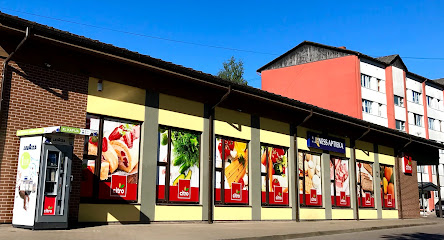
Eldo
Discover Kuldīga's local flavors at Eldo, your premier grocery store featuring fresh produce and authentic Latvian specialties.
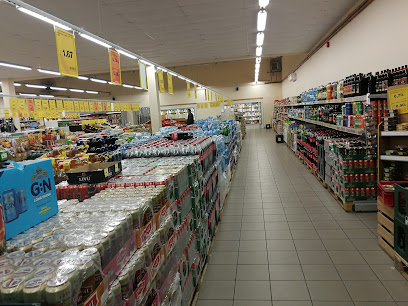
Ballas, veikals
Explore Ballas in Kuldīga for fresh produce, local delicacies, and a vibrant farmers' market experience that celebrates health and community.
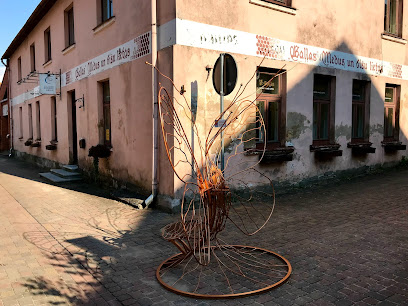
Pepco
Explore Pepco in Kuldīga for affordable fashion, baby essentials, home goods, and toys, all in a friendly shopping environment.
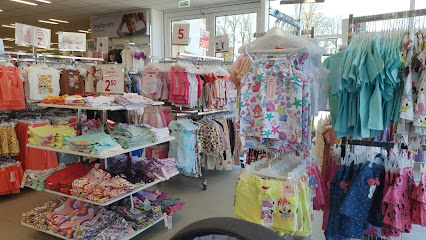
AlkOutlet Dzērieni & Vīni
Experience Kuldīga's local beverage culture at AlkOutlet Dzērieni & Vīni, your go-to destination for fine wines and spirits.
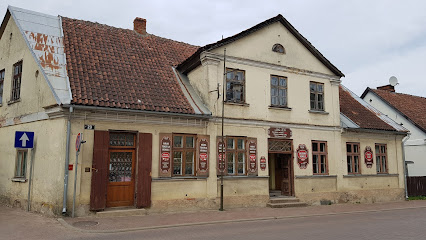
KUULD ko rada [rāda] latvietis?
Explore KUULD ko rada [rāda] latvietis? for unique, handcrafted Latvian gifts and souvenirs in the heart of Kuldīga, a treasure trove of local craftsmanship.
![KUULD ko rada [rāda] latvietis?](https://evendo-location-media.s3.amazonaws.com/ShoppingImages/74b87212-d8e8-422f-a9cb-91033395b0cf)
KLZ , SIA
KLZ, SIA in Kuldīga: Your destination for unique, high-quality furniture that blends modern elegance with traditional craftsmanship.
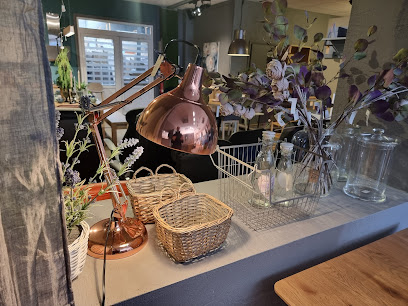
Euroskor Latvija , SIA, Veikals
Explore the latest shoe styles at Euroskor Latvija, the premier footwear store in Kuldīga, Latvia, perfect for every occasion.
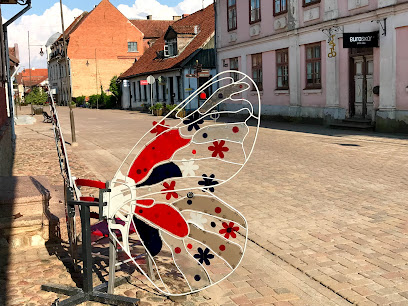
STIHL mezam un darzam , veikals
Discover high-quality outdoor tools and expert advice at the STIHL store in Kuldīga, a perfect stop for gardening enthusiasts.
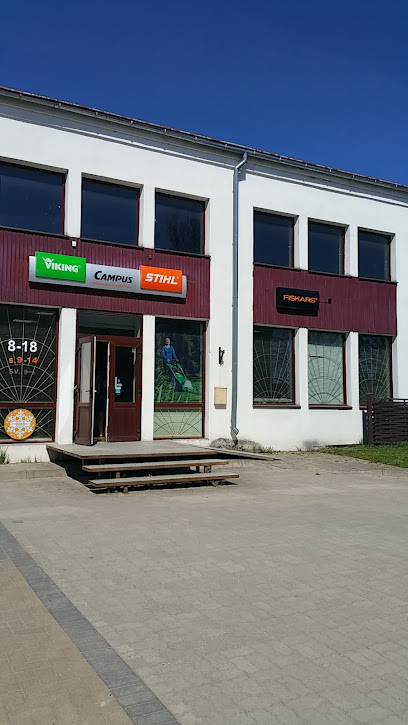
Endzi Baby rokdarbi
Discover Endzi Baby rokdarbi, Kuldīga's enchanting children's clothing store offering unique handmade outfits for your little ones in a delightful shopping experience.
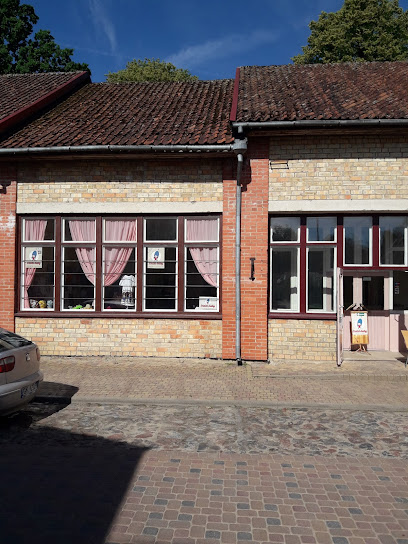
Patrīcija
Explore Patrīcija, Kuldīga's stylish women's clothing store offering unique fashion pieces and local designer collections.
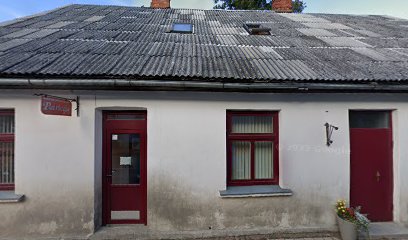
Zelta Zieds, Ziedu bāze
Discover the colorful world of Zelta Zieds, a premier wholesale florist and flower market in Kuldīga, offering a delightful selection of blooms for every occasion.
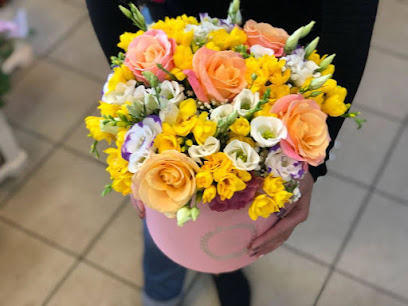
Essential bars & hidden hideouts
Pagrabiņš
Experience the vibrant atmosphere and unique flavors of Pagrabiņš, a must-visit bar and restaurant in Kuldīga, Latvia.
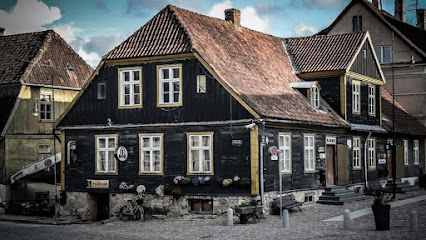
Goldingen Room
Experience the heart of Kuldīga's culinary scene at Goldingen Room, where local flavors meet international cuisine in a warm, inviting atmosphere.
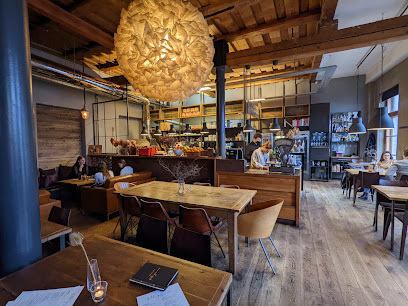
Kursas Zeme
Discover the artistic culinary haven of Kursas Zeme in Kuldīga, where exquisite dishes meet creative ambiance in a charming setting.
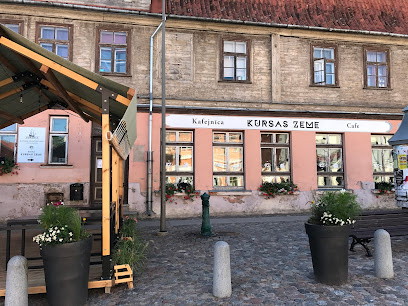
Stender's
Discover the authentic taste of Latvia at Stender's, a cozy restaurant in Kuldīga serving fresh, local cuisine in a charming setting.
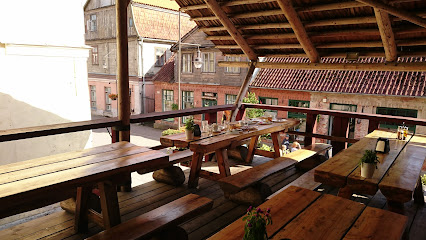
Bangert's Restaurant
Experience the rich flavors of Latvia at Bangert's Restaurant, a culinary gem in Kuldīga known for its exquisite dishes and inviting atmosphere.
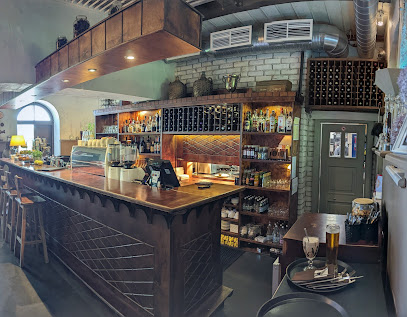
Stender's Pizza
Experience authentic Latvian hospitality with delightful pizzas at Stender's Pizza in Kuldīga, perfect for family dining.
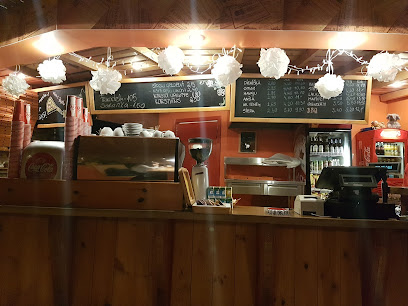
Klūdziņa
Experience the heart of Latvian cuisine at Klūdziņa, a must-visit restaurant in the charming town of Kuldīga.
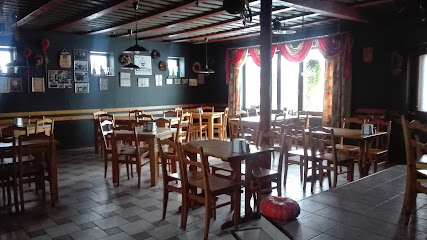
Kuldigas rumba , SIA
Experience the heart of Latvian cuisine at Kuldīgas Rumba, where traditional soups and warm hospitality await you in Kuldīga.
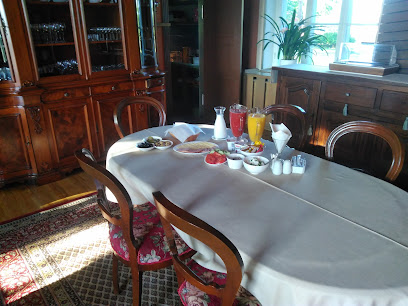
DUNA Brewery, shop & taproom
Discover the unique flavors of craft beer at DUNA Brewery in Kuldīga, a must-visit for beer enthusiasts and casual visitors alike.
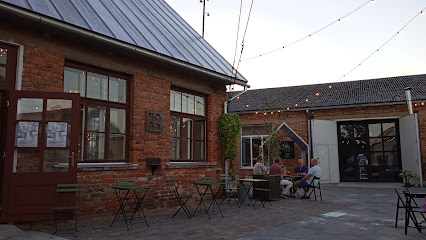
Bistro Bukstiņš
Discover the heart of Kuldīga's culinary scene at Bistro Bukstiņš, where delightful flavors meet a cozy atmosphere.
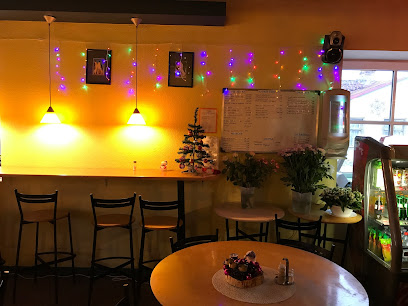
Cafe CIRCUS PIZZA Kuldiga
Discover the best pizza experience at Cafe CIRCUS PIZZA, where delightful flavors meet the charm of Kuldiga, Latvia.
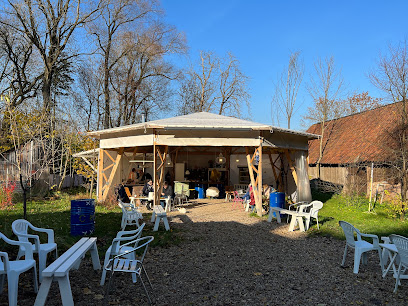
Hercogs, Sushi bar
Discover the rich flavors of sushi and local delicacies at Hercogs in Kuldīga, where culinary excellence meets a warm atmosphere.
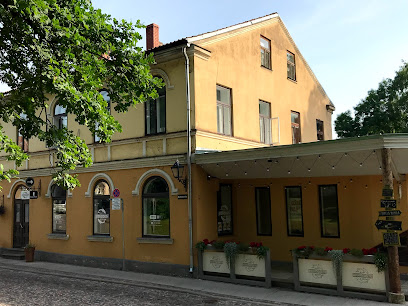
KOPA taste
Discover KOPA Taste in Kuldīga: A culinary haven blending local flavors with modern creativity for an unforgettable dining experience.
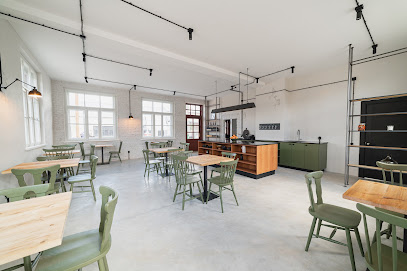
Klondaika
Discover Kuldīga's vibrant gaming scene at Klondaika, where excitement and entertainment await every visitor.
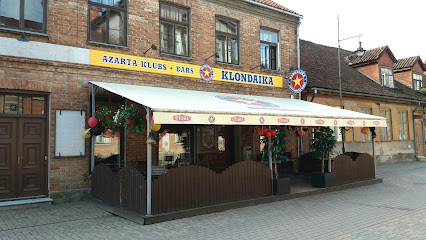
Bārs DIDRO
Discover the vibrant atmosphere of Bārs DIDRO, Kuldīga's best bar, where local flavors meet exceptional service for a unique nightlife experience.
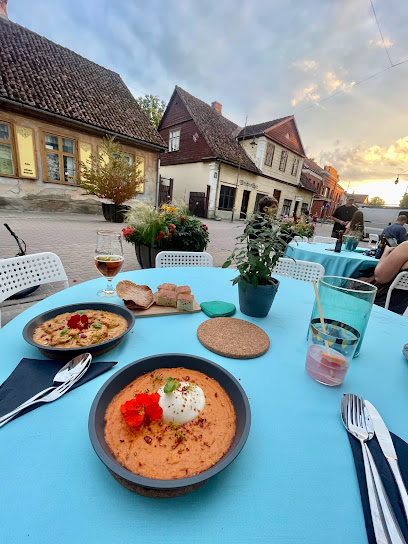
Local Phrases about Kuldīga
-
- HelloSveiki
[svei-ki] - GoodbyeUz redzēšanos
[uz red-ze-sha-nos] - YesJā
[ya] - NoNē
[ne] - Please/You're welcomeLūdzu
[luu-dzu] - Thank youPaldies
[pal-dies] - Excuse me/SorryAtvainojiet
[at-vai-no-yet] - How are you?Kā jums klājas?
[kaa yums klaa-yas] - Fine. And you?Labi. Un jums?
[la-bi un yums] - Do you speak English?Vai jūs runājat angļu valodā?
[vai yuus ru-naa-yat ang-luu va-lo-daa] - I don't understandEs nesaprotu
[es ne-sa-pro-tu]
- HelloSveiki
-
- I'd like to see the menu, pleaseEs vēlētos redzēt ēdienkarti, lūdzu
[es ve-le-tos red-zeet e-dien-kar-ti luu-dzu] - I don't eat meatEs nēēdu gaļu
[es nee-yee-du ga-lu] - Cheers!Priekā!
[prie-kaa] - I would like to pay, pleaseEs vēlētos samaksāt, lūdzu
[es ve-le-tos sa-mak-saat luu-dzu]
- I'd like to see the menu, pleaseEs vēlētos redzēt ēdienkarti, lūdzu
-
- Help!Palīdzību!
[pa-lid-zee-bu] - Go away!Iziesiet prom!
[i-zie-syet prom] - Call the Police!Saukiet policiju!
[sau-ki-et po-li-tsi-yu] - Call a doctor!Saukiet ārstu!
[sau-ki-et aar-stu] - I'm lostEs esmu pazudis
[es es-mu pa-zu-dis] - I'm illMan ir slikti
[man eer slik-ti]
- Help!Palīdzību!
-
- I'd like to buy...Es vēlētos pirkt...
[es ve-le-tos peerk-t] - I'm just lookingEs tikai skatos
[es ti-kai ska-tos] - How much is it?Cik tas maksā?
[tsik tas mak-saa] - That's too expensiveTas ir pārāk dārgs
[tas eer paa-raak daargs] - Can you lower the price?Vai jūs varētu pazemināt cenu?
[vai yuus va-re-tu pa-ze-mi-naat ce-nu]
- I'd like to buy...Es vēlētos pirkt...
-
- What time is it?Cik ir pulkstenis?
[tsik eer pulk-ste-nis] - It's one o'clockIr viens pulkstenis
[eer vyeens pulk-ste-nis] - Half past (10)Pusdesmit
[poos-de-smit] - MorningRīts
[riits] - AfternoonPēcpusdiena
[peech-pus-die-na] - EveningVakars
[va-kars] - YesterdayVakar
[va-kar] - TodayŠodien
[sho-dieen] - TomorrowRīt
[riit] - 1Viens
[vyens] - 2Divi
[dee-vee] - 3Trīs
[triis] - 4Četri
[che-tri] - 5Pieci
[pie-tsi] - 6Seši
[se-shi] - 7Septiņi
[sep-tee-ni] - 8Astoņi
[as-toni] - 9Devini
[de-vee-ni] - 10Desmit
[des-mit]
- What time is it?Cik ir pulkstenis?
-
- Where's a/the...?Kur ir...?
[koor eer] - What's the address?Kāda ir adrese?
[kaa-da eer a-dre-se] - Can you show me (on the map)?Vai jūs varat mani parādīt (uz kartes)?
[vai yuus va-rat ma-ni pa-raa-deet uz kar-tes] - When's the next (bus)?Kad būs nākamais (autobuss)?
[kad boos naa-ka-mais auto-boos] - A ticket (to ....)Bilete (uz ....)
[bi-le-te oos]
- Where's a/the...?Kur ir...?
History of Kuldīga
-
Kuldīga, formerly known as Goldingen, was first mentioned in historical records in 1242. It played a significant role in the early development of the region, being part of the Livonian Order's territory. Its strategic location by the Venta River made it a crucial settlement for trade and military purposes in medieval times.
-
During the 13th and 14th centuries, Kuldīga thrived under the influence of the Livonian Order, a branch of the Teutonic Knights. The town became fortified with a castle built in 1242, which served as a defensive stronghold and administrative center. This era marked a period of prosperity and growth for Kuldīga, attracting merchants and craftsmen.
-
In the 16th century, Kuldīga became one of the key towns of the Duchy of Courland and Semigallia, a vassal state of the Polish-Lithuanian Commonwealth. Under the rule of Duke Jacob Kettler (1642-1682), the town experienced significant economic growth and development, contributing to the duchy's maritime and trade ambitions.
-
The 17th and 18th centuries brought turbulent times for Kuldīga as it changed hands between Swedish and Russian control. The Great Northern War (1700-1721) saw the town occupied by Swedish and later Russian troops. Despite these conflicts, Kuldīga managed to preserve much of its historical architecture and cultural heritage.
-
During the 19th century, Kuldīga underwent significant urban development. The town saw the construction of notable buildings such as the Town Hall (1865) and the St. Catherine's Church (1874). The establishment of the Kuldīga Gymnasium in 1845 marked an important step in the town's educational and cultural advancement.
-
Like much of Latvia, Kuldīga experienced the upheavals of World War II and the subsequent Soviet occupation. The town was occupied by Nazi Germany from 1941 to 1945, and later became part of the Latvian Soviet Socialist Republic. Despite these challenging times, Kuldīga retained its historical charm and continued to be a center of local culture and heritage.
-
Since Latvia regained its independence in 1991, Kuldīga has experienced a cultural and historical renaissance. The town has invested in the restoration of its historic buildings and sites, earning recognition as a UNESCO World Heritage site candidate. Today, Kuldīga is celebrated for its well-preserved medieval architecture, charming old town, and the stunning Venta Rapid waterfall, Europe's widest waterfall.
Kuldīga Essentials
-
Kuldīga is located in western Latvia, approximately 150 kilometers from the capital, Riga. The nearest major airport is Riga International Airport (RIX). From Riga, you can travel to Kuldīga by bus, which takes around 2.5 to 3 hours. There are regular bus services operated by various companies. Alternatively, you can rent a car and drive to Kuldīga, which offers a scenic route through the Latvian countryside.
-
Kuldīga is a relatively small town, and most of its attractions are within walking distance. For longer trips or if you prefer not to walk, local taxis are available and can be hailed on the street or booked by phone. There is also a local bus service connecting Kuldīga with nearby towns and villages. For a more flexible mode of transport, consider renting a bicycle from one of the local rental shops.
-
The official currency in Latvia is the Euro (EUR). Credit and debit cards are widely accepted in hotels, restaurants, and shops in Kuldīga. However, it is advisable to carry some cash for smaller establishments, markets, and rural areas where card payments may not be accepted. ATMs are available throughout the town for convenient cash withdrawal.
-
Kuldīga is generally a safe destination for tourists. Violent crime is rare, but it is always wise to take standard precautions. Avoid walking alone late at night in poorly lit areas and keep an eye on your belongings, especially in crowded places. There are no specific neighborhoods with high crime rates targeting tourists, but it is always best to stay vigilant and aware of your surroundings.
-
In case of emergency, dial 112 for immediate assistance, which will connect you to police, fire, or medical services. Kuldīga has local police and a medical facility for urgent care. It is recommended to have travel insurance that covers medical emergencies. For minor health issues, there are pharmacies in the town where you can purchase over-the-counter medications.
-
Fashion: Do dress comfortably and appropriately for the weather. In summer, light clothing is recommended, while in winter, warm layers are essential. Religion: Do respect local customs and traditions. When visiting churches, dress modestly and refrain from loud conversations. Public Transport: Do be courteous and offer your seat to elderly passengers. Don't eat or drink on public transport. Greetings: Do greet people with a friendly 'Sveiki' (Hello). A handshake is common among acquaintances. Eating & Drinking: Do try local delicacies and accept food offerings graciously. Don't refuse hospitality, as it is considered impolite.
-
To experience Kuldīga like a local, visit the local markets where you can buy fresh produce and traditional Latvian goods. Engage with locals, as they are often friendly and willing to share stories about the town's history and culture. Don't miss visiting the Venta Rapid, the widest waterfall in Europe, and the historical Old Brick Bridge. For a unique experience, attend one of the local festivals or events, such as the Kuldīga Town Festival, which offers a glimpse into the town's vibrant culture and traditions.
Trending Landmarks in Kuldīga
-
Venta waterfall
-
Alekšupīte waterfall
-
Kuldiga Castle Park
-
Kuldiga grand stage
-
Kuldīga brick bridge over Venta
-
Riežupes smilšu alas
-
Kuldiga District Museum
-
Kuldiga Old Town Hall Square
-
The story of ancient Kuldiga museum
-
Kuldiga’s Needle Tower
-
Girl with a water dish
-
Kuldīga, Padure Parish, Vicinity of the Old School I, Jewish Victim Memorial Site, Latvia
-
Kuldīga Municipality, Rumba Parish, Monument to Victims of Fascism
-
Kuldiga, Rumba Parish I, Jewish Victim Memorial Site, Latvia
-
The oldest wooden house in Kurzeme
Nearby Cities to Kuldīga
-
Things To Do in Talsi
-
Things To Do in Ventspils
-
Things To Do in Liepaja
-
Things To Do in Jurmala
-
Things To Do in Riga
-
Things To Do in Šiauliai
-
Things To Do in Kuressaare
-
Things To Do in Klaipėda
-
Things To Do in Sigulda
-
Things To Do in Panevėžys
-
Things To Do in Cesis
-
Things To Do in Pärnu
-
Things To Do in Kärdla
-
Things To Do in Visby
-
Things To Do in Haapsalu








